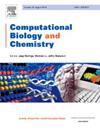基于口腔鳞状细胞癌免疫代谢相关基因的预后模型的构建与验证
IF 2.6
4区 生物学
Q2 BIOLOGY
引用次数: 0
摘要
口腔鳞状细胞癌(OSCC)是一种重要的头颈部癌症,其发病率和死亡率不断上升。免疫相关基因(IRGs)和代谢相关基因(MRGs)在口腔鳞状细胞癌的发病、转移和发展过程中起着至关重要的作用。本研究利用癌症基因组图谱(The Cancer Genome Atlas,TCGA)的数据,通过差异分析确定与OSCC相关的IRGs和MRGs。利用单变量考克斯分析确定与患者预后相关的免疫代谢相关基因(IMRGs)。利用Lasso-Cox回归法构建了OSCC的预后模型,随后利用基因表达总库(GEO)的数据集进行了验证。非负矩阵因子化(NMF)聚类确定了OSCC的三种分子亚型,其中C2亚型显示出较好的总生存期(OS)和无进展生存期(PFS)。基于九个IMRGs建立的预后模型将OSCC患者分为高风险组和低风险组,其中低风险组在训练组和测试组中的OS明显更长。该模型具有很强的预测能力,风险评分是一个独立的预后因素。此外,程序性死亡1(PD1)和细胞毒性T淋巴细胞相关抗原4(CTLA4)的表达水平在不同风险组之间存在差异。基因组富集分析(Gene Set Enrichment Analysis,GSEA)表明,高危组和低危组之间存在不同的富集通路,突出了免疫和代谢过程在 OSCC 中的关键作用。九个IMRGs预后模型具有出色的预测性能,有望应用于临床。本文章由计算机程序翻译,如有差异,请以英文原文为准。
Construction and validation of a prognostic model based on immune-metabolic-related genes in oral squamous cell carcinoma
Oral squamous cell carcinoma (OSCC), a significant type of head and neck cancer, has witnessed increasing incidence and mortality rates. Immune-related genes (IRGs) and metabolic-related genes (MRGs) play essential roles in the pathogenesis, metastasis, and progression of OSCC. This study exploited data from The Cancer Genome Atlas (TCGA) to identify IRGs and MRGs related to OSCC through differential analysis. Univariate Cox analysis was utilized to determine immune-metabolic-related genes (IMRGs) associated with patient prognosis. A prognostic model for OSCC was constructed using Lasso-Cox regression and subsequently validated with datasets from the Gene Expression Omnibus (GEO). Non-Negative Matrix Factorization (NMF) clustering identified three molecular subtypes of OSCC, among which the C2 subtype showed better overall survival (OS) and progression-free survival (PFS). A prognostic model based on nine IMRGs was developed to categorize OSCC patients into high- and low-risk groups, with the low-risk group demonstrating significantly longer OS in both training and testing cohorts. The model showed strong predictive capabilities, and the risk score served as an independent prognostic factor. Additionally, expression levels of programmed death 1 (PD1) and cytotoxic T-lymphocyte-associated antigen 4 (CTLA4) differed between the risk groups. Gene Set Enrichment Analysis (GSEA) indicated distinct enriched pathways between high-risk and low-risk groups, highlighting the crucial roles of immune and metabolic processes in OSCC. The nine IMRGs prognostic model presented excellent predictive performance and has potential for clinical application.
求助全文
通过发布文献求助,成功后即可免费获取论文全文。
去求助
来源期刊

Computational Biology and Chemistry
生物-计算机:跨学科应用
CiteScore
6.10
自引率
3.20%
发文量
142
审稿时长
24 days
期刊介绍:
Computational Biology and Chemistry publishes original research papers and review articles in all areas of computational life sciences. High quality research contributions with a major computational component in the areas of nucleic acid and protein sequence research, molecular evolution, molecular genetics (functional genomics and proteomics), theory and practice of either biology-specific or chemical-biology-specific modeling, and structural biology of nucleic acids and proteins are particularly welcome. Exceptionally high quality research work in bioinformatics, systems biology, ecology, computational pharmacology, metabolism, biomedical engineering, epidemiology, and statistical genetics will also be considered.
Given their inherent uncertainty, protein modeling and molecular docking studies should be thoroughly validated. In the absence of experimental results for validation, the use of molecular dynamics simulations along with detailed free energy calculations, for example, should be used as complementary techniques to support the major conclusions. Submissions of premature modeling exercises without additional biological insights will not be considered.
Review articles will generally be commissioned by the editors and should not be submitted to the journal without explicit invitation. However prospective authors are welcome to send a brief (one to three pages) synopsis, which will be evaluated by the editors.
 求助内容:
求助内容: 应助结果提醒方式:
应助结果提醒方式:


